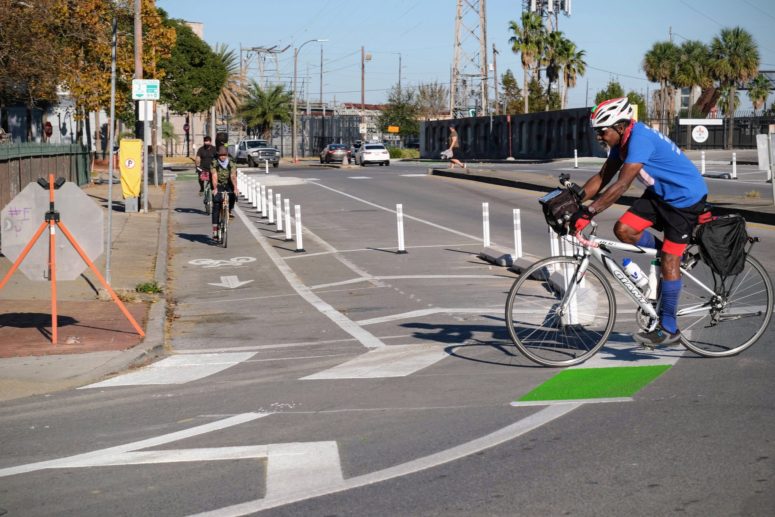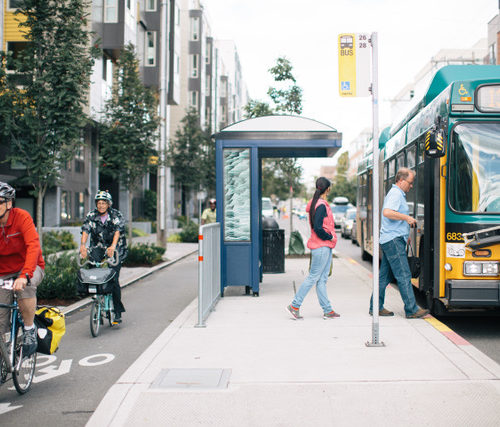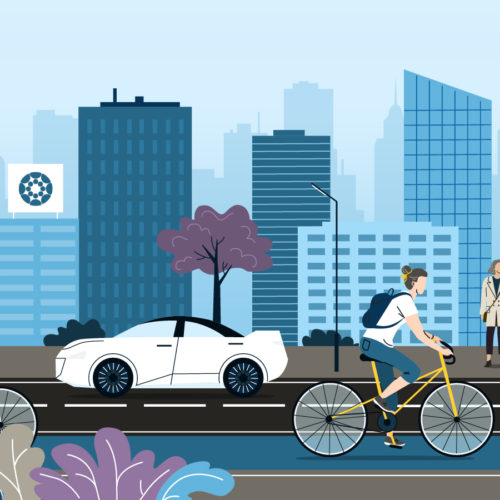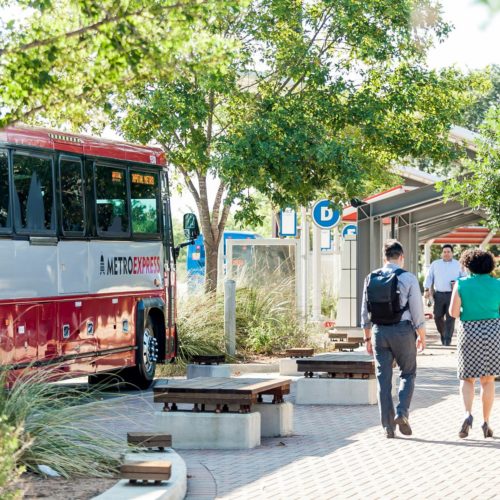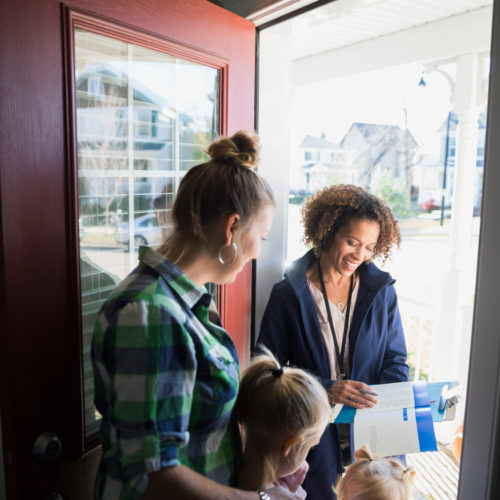The Algiers neighborhood is now home to a connected network of protected bike lanes and trails.
This year, the City of New Orleans intends to add 18 miles of safe, connected bike lanes and trails to its growing network of low-stress bikeways.
In 2019, city leaders created the first bike network plan for the Big Easy, known as New Orleans Bikeway Blueprint, and identified hundreds of miles of corridors where infrastructure improvements were most likely to increase biking and neighborhood connectivity. But with so many corridors chosen for improvements, limited staffing, and no dedicated funding source to work with, how would leaders start the monumental task of changing each street?
The Blueprint itself helped answer this question, not by focusing on places where biking was already booming, but by prioritizing neighborhoods where historic disinvestment and social inequities had made transportation a particular concern for its residents. By filtering projects through an equitable decision-making framework, planners and policymakers were able to focus investments where they were most needed.
Accelerated project delivery began in 2019, when Mayor LaToya Cantrell announced that implementation of the Blueprint would begin in Algiers, the city’s second oldest neighborhood. Located near downtown, but separated by the expansive Mississippi River and a decades-long history of roadway disinvestment, Algiers would be a model for prioritizing equity and promoting bicycling among those who could benefit the most.
“When we have a plan that shows the network and what we’re trying to achieve, and we can talk about all the community engagement that went into it, it goes a lot further in peoples’ minds,” said Jennifer Ruley, mobility and safety program lead, New Orleans Department of Public Works.
During a year of intensive community outreach, City officials stressed the importance of taking a comprehensive approach to mobility improvements. This approach included completing road repairs so that streets are functional and adding high-visibility crosswalks, sidewalks, and bus stops prior to installing new bike lanes.
In only 24 months, the City’s Public Works Department drastically increased the pace of its work, and by the end of 2021 had invested $30M in street improvements in Algiers, including 11 miles of new protected bikeways.
How did New Orleans move from planning to construction so quickly?
City of New Orleans leaders and community advocates agreed: in order to make implementation of the Blueprint successful, community residents and business owners would need to lead the planning process. The outcomes of each project had to fit the character and daily needs of all users, and the traditional methods of building support should be reconsidered.
To accomplish these goals, Bike Easy and other local bicycling advocates knew the city needed a new community-led leadership model for promoting safe streets and supporting the City’s public rollout of the Bikeway Blueprint.
To accomplish this, the New Orleans Complete Streets Coalition was created. Bicycling advocates joined a diverse group of organizations, businesses, civic leaders, and community members who support improving roadways and safe transportation options for the people of New Orleans.
Through the Coalition, advocates for safe and improved streets took on a new identity that was more representative of the people of New Orleans. Local organizations like Girl Trek, Algiers Economic Development Foundation, and the Black Chamber of Commerce became the spokespeople for projects in Algiers.
Rather than positioning bicycling improvements against other neighborhood priorities, these leaders were able to speak authentically about the ways that comprehensive mobility improvements – including biking – would be a benefit for everyone. They highlighted and showcased the entire network of improvements as a single project, engaging community members in a conversation that was about “mobility for all” instead of “cars versus bikes.”
New Orleans proves that traditional bicycling advocates don’t need to be the most prominent voice or public face of transformational change. In fact, too often advocates are viewed as a special interest group and dismissed as unrepresentative of the community.
For New Orleans, the ability to create a new group of advocates was key to their success. Instead of pushing for a particular mode of travel, they are advocates for communities and for improvements that serve the people who live there.
New Orleans has bold plans to continue its rapid progress.
Today, about half of the total planned network in Algiers is complete, and this accomplishment is inspiring work throughout the rest of the city. As City officials begin work in other parts of New Orleans, the successful community engagement and messaging work pioneered in Algiers has established a new precedent for moving projects from concept to completion at record pace.
After many years of advocacy, planning, and hard work, New Orleans is starting to see the benefits of street improvements manifest across the city. In polling commissioned by the New Orleans Complete Streets Coalition in 2020, 80% of New Orleans residents support the Moving New Orleans Bike Blueprint. Building protected bike lanes is supported by 73%.
New Orleans proves that U.S. cities might better achieve their mobility goals by listening to and championing the perspectives of all the people who live in a community, including those that may never use a bike at all. We can give everyone more options to get where they need to go quickly and safely by building bike infrastructure into our transportation improvements.
Pretty soon, we might start calling the Big Easy, the Bike Easy.
Is your city ready to be the next New Orleans? Our work is built on partnerships. Let’s get to know each other, your community, and your goals. Get in touch with us today.

